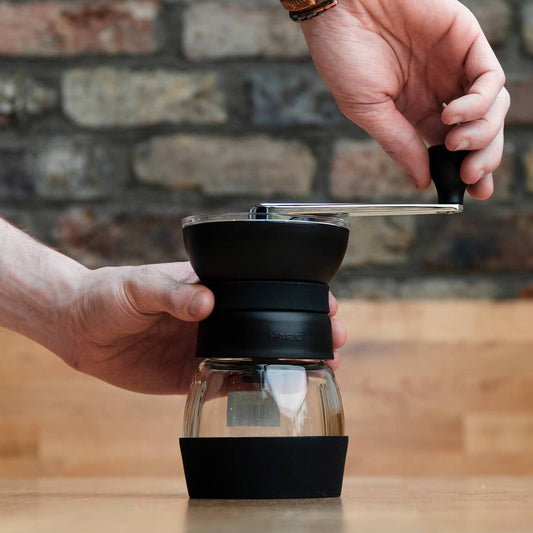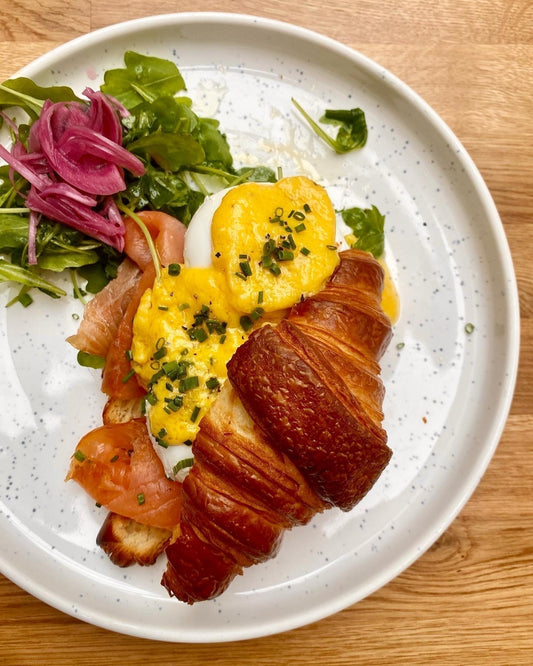While every country enjoys coffee in its way, some nations have developed unique and meaningful rituals surrounding their coffee consumption.
As we continue our journey into global coffee traditions, this blog explores Japan’s meticulous craftsmanship, Brazil’s warm hospitality, and Sweden’s relaxed coffee breaks—three cultures where coffee is deeply intertwined with daily life.
Japanese coffee culture: precision, artistry, and elegance
Japan has cultivated a unique approach to coffee, blending craftsmanship, technology, and tradition into a refined experience. Though tea is historically the dominant beverage, Japan’s coffee scene has flourished, creating a culture that values quality, precision, and aesthetics.
The rise of pour-over
Japan’s specialty coffee movement gained momentum in the early 2000s, when coffee enthusiasts began focusing on single-origin beans, direct trade, and artisanal brewing methods.
Inspired by the Japanese tea ceremony, it has embraced pour-over brewing methods such as the Hario V60 and Chemex. These techniques are popular due to their precision and ability to highlight delicate flavour notes.
Baristas in Japan treat coffee preparation as an art form, carefully controlling grind size, water temperature, and pouring speed to create a balanced and aromatic brew.
Kissaten: traditional Japanese coffee houses
Before modern speciality coffee shops, Japan had kissaten, traditional coffee houses that have existed since the early 20th century. Unlike bustling cafés, kissaten offer a quiet, nostalgic atmosphere, where visitors enjoy slow-brewed coffee served in elegant porcelain cups.
These establishments often feature hand-drip brewing, reflecting Japan’s focus on quality over speed.
Siphon brewing: a scientific approach
One of Japan’s most fascinating brewing methods is siphon coffee, which relies on vacuum pressure to extract coffee in a glass apparatus.

This method is visually captivating and produces a smooth, complex cup, making it a staple in many high-end coffee shops.
Japan’s specialty coffee culture is a blend of tradition, innovation, and sustainability, making it one of the most fascinating coffee movements in the world.
Brazilian coffee culture: warmth, hospitality, and social connection
As the largest coffee producer in the world, Brazil has a coffee culture that revolves around hospitality, connection, and everyday moments.
Coffee is not just a beverage—it’s a way to welcome guests, strengthen relationships, and take a break from daily routines.
Cafézinho: Brazil’s signature coffee ritual
The tradition of cafézinho in Brazil dates back to the 19th century, when coffee became the country’s leading export and an integral part of daily life. As coffee plantations expanded, Brazilians developed a distinct way of serving coffee, prioritising hospitality and accessibility.
Unlike espresso, cafézinho is not brewed under high pressure but instead made using filtered methods, resulting in a strong yet smooth coffee. It is traditionally served boiling in small cups, often pre-sweetened, reflecting Brazil’s preference for bold yet balanced flavours.
Cafézinho became a symbol of hospitality, offered to guests upon arrival at homes, offices, and even shops. It is not just a drink—it’s a gesture of warmth and welcome, reinforcing Brazil’s reputation for social connection and generosity.

Coffee and Brazilian street culture
In bustling Brazilian cities, coffee is integrated into daily life. You’ll find coffee vendors on streets and in markets, serving freshly brewed cafézinho from simple, no-frills kiosks.
Unlike large coffee chains, these stands focus on speed and accessibility, making coffee readily available to passersby.
Traditional Brazilian coffee farms (Fazendas)
Brazil’s coffee farms, known as fazendas, are at the heart of global coffee production. Many farms practice sustainable and direct trade farming, ensuring quality beans while preserving the environment.
Some fazendas even offer coffee tours, allowing visitors to experience the cultivation process, tasting sessions, and traditional farm-style brewing.
Brazilian coffee is social, generous, and deeply embedded in daily life, ensuring every cup is shared with a sense of community.
Swedish coffee culture: the art of slowing down with fika
Coffee first arrived in Sweden in the late 17th century, gaining popularity among the wealthy by the 18th century. However, coffee faced multiple bans throughout the 18th and early 19th centuries, as Swedish monarchs attempted to curb its consumption. Despite these restrictions, coffee drinking persisted, and by the mid-19th century, it had become a staple of Swedish life even among the working class.
The concept of fika as a Sweden’s coffee culture is less about speed and efficiency and more about taking a moment to enjoy life. The Swedish tradition of fika, meaning a coffee break accompanied by pastries or snacks, is an essential part of daily routines, workplaces, and social gatherings.
What is Fika?
Fika is an intentional pause, a break designed for relaxation, conversation, and indulgence. It usually involves coffee and baked goods, such as cinnamon buns (kanelbullar), biscuits, or cakes, encouraging Swedes to slow down, connect, and enjoy simple pleasures.

Workplace Fika and social bonding
In Swedish workplaces, fika is often scheduled into the day, ensuring employees take time to refresh and socialise. Rather than rushing through a coffee break, fika is treated as an important part of maintaining wellbeing.
Sweden’s love for strong coffee
Swedes are among the world’s highest coffee consumers, typically preferring strong, black coffee served in large cups. While espresso-based drinks are available, traditional Swedish coffee leans toward filter brews, enjoyed throughout the day.
Fika is not just a coffee break—it’s a cultural practice that prioritises balance, reflection, and human connection. It remains a deeply ingrained tradition, reinforcing the idea that coffee is best enjoyed slowly and meaningfully.
Japan, Brazil, and Sweden each offer distinct coffee traditions, shaped by culture, history, and social values.
Exploring coffee traditions from around the world enables us to appreciate different ways of enjoying this beloved drink and offers inspiration for new rituals to incorporate into our routines.
Which tradition resonates with you?
Perhaps it’s time to embrace a new coffee ritual and deepen your appreciation for coffee culture! ☕✨






